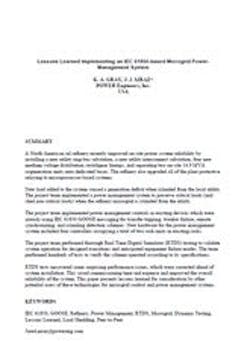A North American oil refinery recently improved on-site power system reliability by installing a new utility ring-bus substation, a new utility interconnect substation, four new medium voltage distribution switchgear lineups, and separating two on-site 14.9 MVA cogeneration units onto dedicated buses in our management system . The refinery also upgraded all of the plant protective relaying to microprocessor-based systems.
New load added to the system caused a generation deficit when islanded from the local utility. The project team implemented a power management system to preserve critical loads (and shed non-critical loads) when the refinery microgrid is islanded from the utility.
The project team implemented power management controls in existing devices which were already using IEC 61850 GOOSE messaging for transfer tripping, breaker failure, remote synchronizing, and islanding detection schemes. New hardware for the power management system included four controllers occupying a total of two rack-units in existing racks.
The project team performed thorough Real Time Digital Simulator (RTDS) testing to validate system operation for designed transitions and anticipated equipment failure modes. The team performed hundreds of tests to verify the scheme operated according to its specifications.
RTDS tests uncovered some surprising performance issues, which were corrected ahead of system installation. This saved commissioning time and expense and improved the overall reliability of the system. This paper presents lessons learned for consideration by other potential users of these technologies for microgrid control and power management systems.
